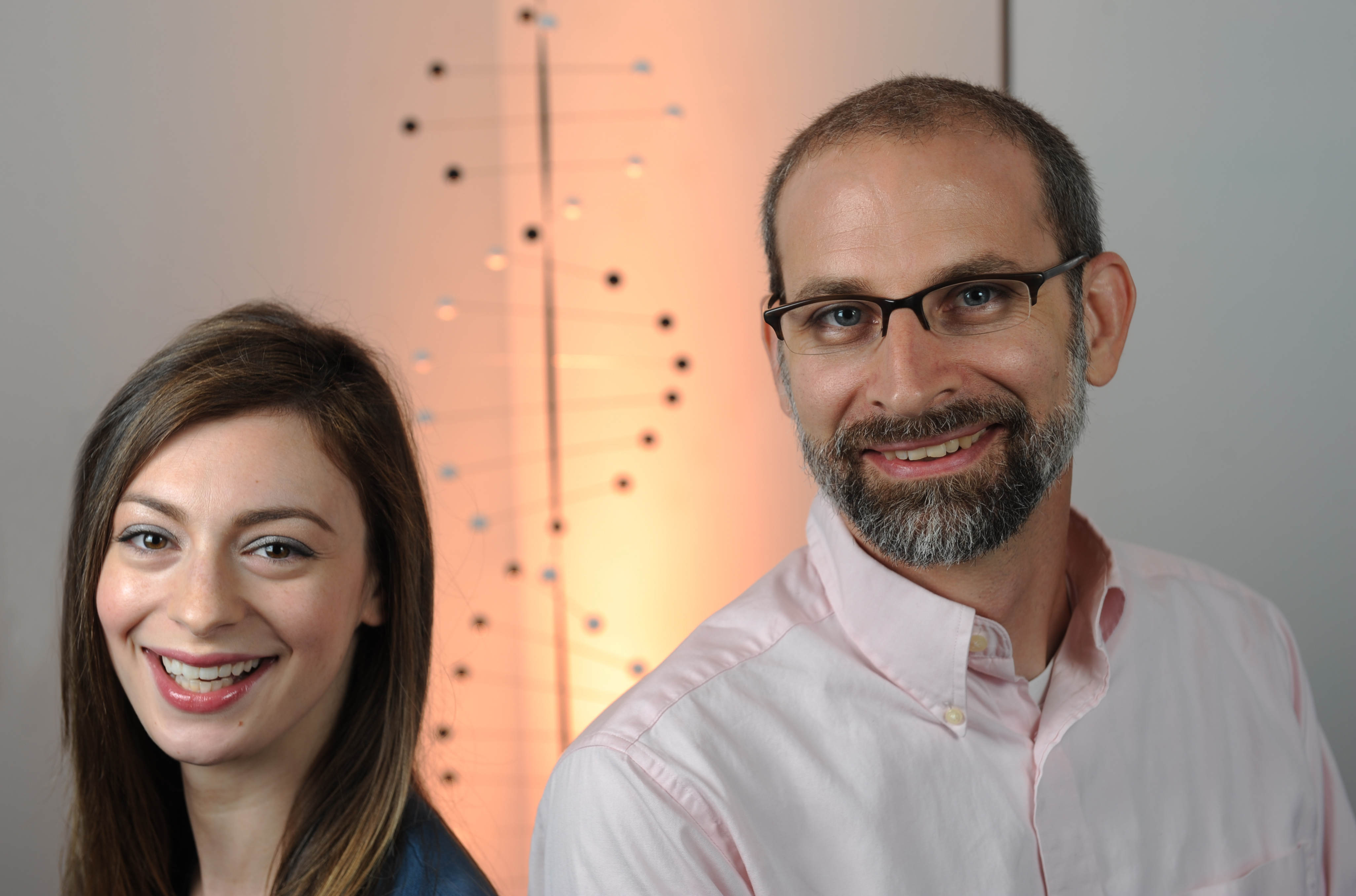
Tucked within its double-helix structure, DNA contains the chemical blueprint that guides all the processes that take place within the cell and are essential for life. Therefore, repairing damage and maintaining the integrity of its DNA is one of the cell’s highest priorities.
Researchers at Vanderbilt University, Pennsylvania State University and the University of Pittsburgh have discovered a fundamentally new way that DNA-repair enzymes detect and fix damage to the chemical bases that form the letters in the genetic code. The discovery is reported in an advanced online publication of the journal Nature on Oct. 1.
“There is a general belief that DNA is rock solid– extremely stable,” says Brandt Eichman, associate professor of biological sciences at Vanderbilt, who directed the project. “Actually DNA is highly reactive.”
On a good day about one million bases in the DNA in a human cell are damaged. These lesions are caused by a combination of normal chemical activity within the cell and exposure to radiation and toxins coming from environmental sources including cigarette smoke, grilled foods and industrial wastes.
“Understanding protein-DNA interactions at the atomic level is important because it provides a clear starting point for designing drugs that enhance or disrupt these interactions in very specific ways,” says Eichman. “So it could lead to improved treatments for a variety of diseases, including cancer.”
The newly discovered mechanism detects and repairs a common form of DNA damage called alkylation. A number of environmental toxins and chemotherapy drugs are alkylation agents that can attack DNA.
When a DNA base becomes alkylated, it forms a lesion that distorts the shape of the molecule enough to prevent successful replication. If the lesion occurs within a gene, the gene may stop functioning. To make matters worse, there are dozens of different types of alkylated DNA bases, each of which has a different effect on replication.
One method to repair such damage that all organisms have evolved is called base excision repair. In BER, special enzymes known as DNA glycosylases travel down the DNA molecule scanning for these lesions. When they encounter one, they break the base pair bond and flip the deformed base out of the DNA double helix. The enzyme contains a specially shaped pocket that holds the deformed base in place while detaching it without damaging the backbone. This leaves a gap (called an “abasic site”) in the DNA that is repaired by another set of enzymes.
Human cells contain a single glycosylase, named AAG, that repairs alkylated bases. It is specialized to detect and delete ethenoadenine bases, which have been deformed by combining with highly reactive, oxidized lipids in the body. AAG also handles many other forms of akylation damage. Many bacteria, however, have several types of glycosylases that handle different types of damage.
“It’s hard to figure out how glycosylases recognize different types of alkylation damage from studying AAG since it recognizes so many,” says Eichman. “So we have been studying bacterial glycosylases to get additional insights into the detection and repair process.”
That is how they discovered the bacterial glycosylase AlkD with its unique detection and deletion scheme. All the known glycosylases work in basically the same fashion: They flip out the deformed base and hold it in a special pocket while they excise it. AlkD, by contrast, forces both the deformed base and the base it is paired with to flip to the outside of the double helix. This appears to work because the enzyme only operates on deformed bases that have picked up an excess positive charge, making these bases very unstable. If left alone, the deformed base will detach spontaneously. But AlkD speeds up the process by about 100 times. Eichman speculates that the enzyme might also remain at the location and attract additional repair enzymes to the site.
AlkD has a molecular structure that is considerably different from that of other known DNA-binding proteins or enzymes. However, its structure may be similar to that of another class of enzymes called DNA-dependent kinases. These are very large molecules that possess a small active site that plays a role in regulating the cells’ response to DNA damage. AlkD uses several rod-like helical structures called HEAT repeats to grab hold of DNA. Similar structures have been found in the portion of DNA-dependent kinases with no known function, raising the possibility that they play an additional, unrecognized role in DNA repair.
The new repair mechanism may also prove to be the key to understanding the differences in the way that the repair enzymes identify and repair toxic and mutagenic lesions. That is important because mutagenic lesions that the repair mechanisms miss are copied to daughter cells and so can spread whereas the deleterious effects of toxic lesions are limited to the original cell.
Understanding these differences could lead to more effective chemotherapy agents, Eichman points out. These drugs are strong alkylating agents designed to induce lesions in a cancer patient’s DNA. Because cancer cells are reproducing more rapidly than the body’s normal cells, the agent kills them preferentially. However, in addition to toxic lesions that kill the cell, the agent also produces lesions that cause mutations, which can lead to additional complications. Additionally, the efficacy of these drugs is low because they are working against the body’s repair mechanisms. If it were possible to design a chemo drug that predominantly creates toxic lesions, however, it should be more effective and have fewer harmful side effects. Alternatively, if we understood how glycosylases recognize alkylation damage, it may be possible to design a drug that specifically inhibits repair of toxic, but not mutagenic, lesions.
Vanderbilt graduate student Emily H. Rubinson, A.S. Prakasha Gowda and Thomas E. Spratt from Pennsylvania State University College of Medicine and Barry Gold from the University of Pittsburgh contributed to the study, which was supported by grants from the American Cancer Society, National Institutes of Health and U.S. Department of Energy.
[Note: A multimedia version of this story is available on Exploration, Vanderbilt’s online research magazine.]